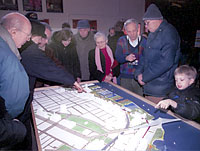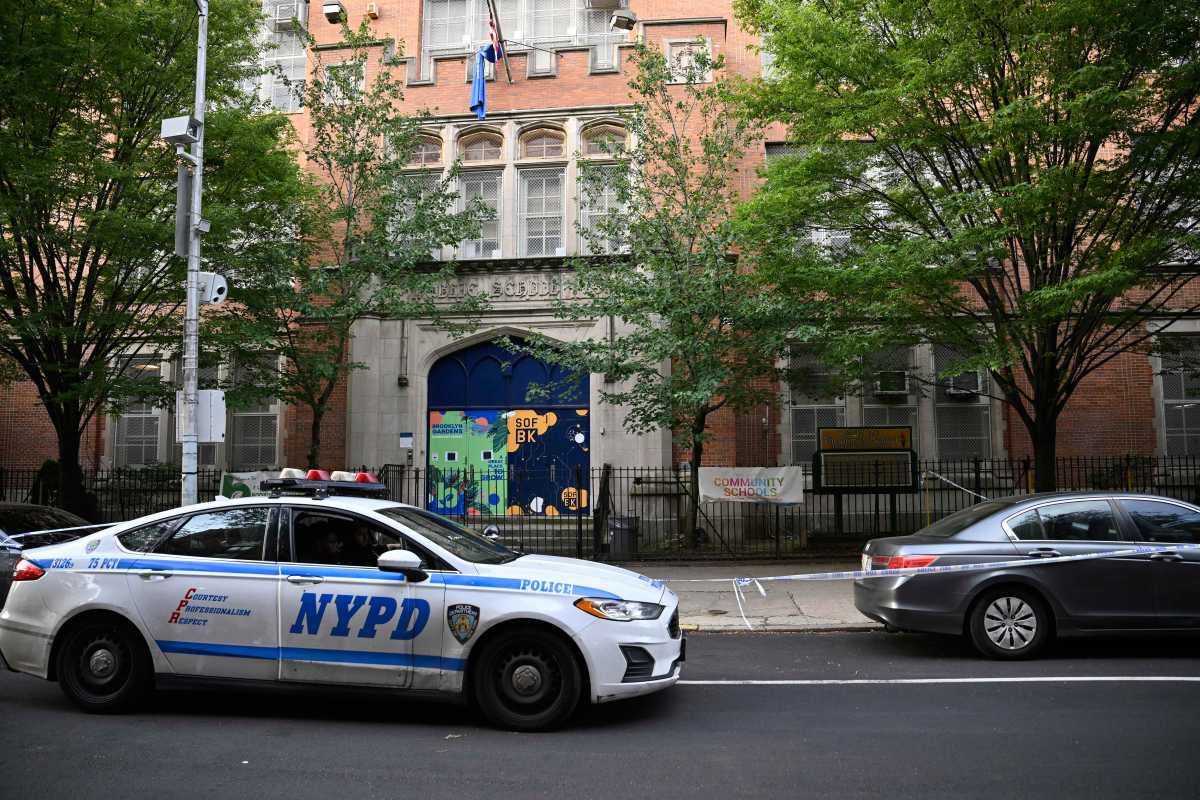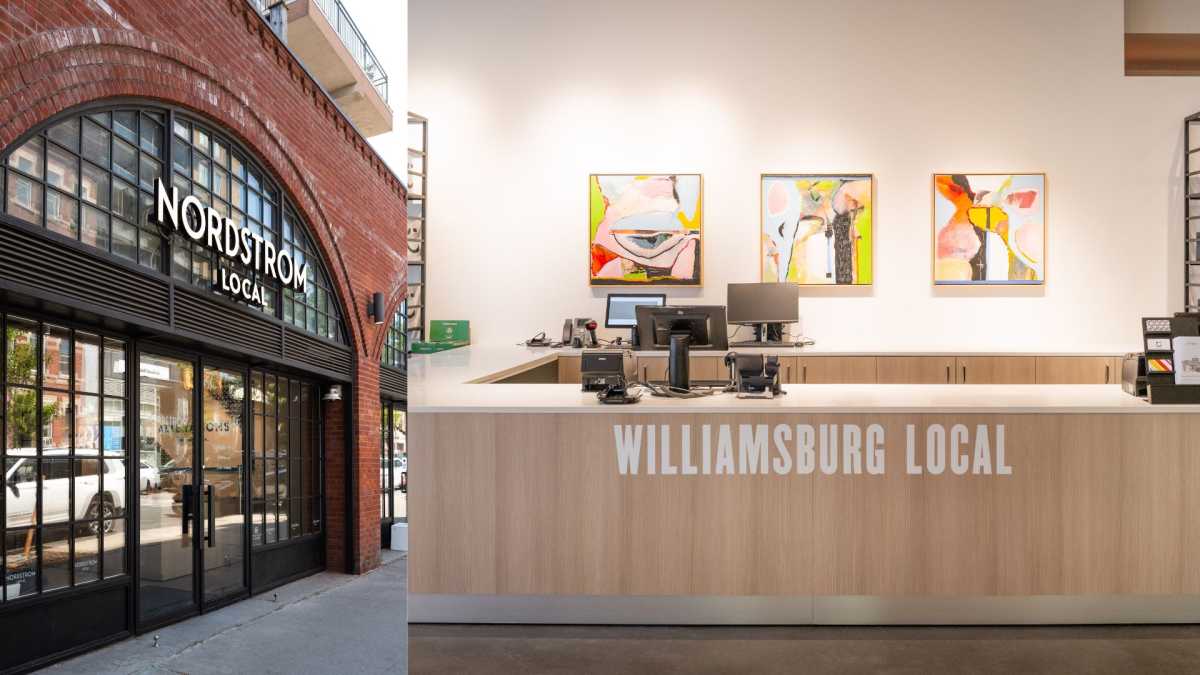In the week following the first in a series of long-awaited public meetings
showing off new plans for Brooklyn Bridge Park, civic groups and neighborhood
associations penned letters of response to the commercial, residential
and open space plan for the waterfront between the Manhattan Bridge and
Atlantic Avenue.
With statements running the gamut from flat-out rejection to pointed but
careful criticism to cautious support and even boisterous boosterism,
it seems all opinions have been accounted for, except for the one stance
possibly most anticipated — that of the Brooklyn Heights constituency
that borders the majority of the park’s length.
The major bone of contention for all neighborhood groups has thus far
been the addition of four residential high-rises to the plan, which state
officials from the Brooklyn Bridge Park Development Corporation (BBPDC)
insist is the most viable way to finance the estimated $15.2 million annual
maintenance budget.
The residences include 730 units of market-rate co-op or condo apartments
at either end of the park, in a 16-story building in DUMBO, a lower-rise
residential property on Pier 1 adjacent to a hotel, and two other buildings,
one 8 to 10 stories and one standing 31-stories near Pier 6 off Atlantic
Avenue.
“The [Brooklyn Heights Association] will adopt no formal position
on the plan until many more of our members view the model,” wrote
BHA President Nancy Bowe in the association’s winter newsletter,
which only noted “we expect to formulate informed opinions and suggestions
over the next few weeks.”
Bowe announced at the annual BHA meeting, on Feb. 17, that she didn’t
mind supporting a Brooklyn Bridge Park plan that included housing, as
long as it was the only viable solution. “I am not convinced of that
yet,” she told BHA members.
This week, Bowe told The Brooklyn Papers that the 30-member BHA board
of directors had met and was still negotiating to form a consensus opinion.
Once formulated that opinion will be sent to the BBPDC and elected officials,
Bowe said.
She would not disclose whether the BHA was leaning for or against the
current plans, but said the letter would repeat the BHA’s encouragement
of lower-rise housing and for the historical Purchase Building, at the
end of Water Street under the Brooklyn Bridge overpass, to be preserved.
A the very least, Bowe said, the BHA would urge that the park planners
seek “to preserve at least part of the Purchase Building for park
uses.”
Whether they’d present any surprises was yet to be determined, said
Bowe.
“There’s 30 board members, we’ll see,” she said. “It’s
difficult to all agree on the aspects of the plan that we do and don’t
like. I’m hoping we’ll have something out this week.”
Other neighborhood groups have already expressed their opinions on the
plan.
Nancy Webster, president of the DUMBO Neighborhood Association, wrote
a letter on behalf of the association to BBPDC President Wendy Leventer
opposing the plans.
The Feb. 22 letter says the DNA “objects to the proposed demolition
of the Purchase Building. As there are no concrete plans for the site,
we fail to see why the demolition of the building … is thought necessary.”
Recommending that park planners return to the many public workshops held
in earlier phases of the park’s design, Webster pointed to alternative
uses for the Purchase Building — rather than demolishing it to create
an open plaza. She also mentioned alliances built with a land trust that
granted the BBPDC a Con Ed site in DUMBO, where planners intend to build
a 16-story luxury residential building, that bind at least a portion of
the site to public use.
“In 1998, DNA worked tirelessly to prevent Con Edison from auctioning
this site to developers interested in building luxury housing there,”
Webster wrote. “We obtained significant help from the Trust for Public
Land to preserve the Con Edison site for open green space,” which
is lacking around that site in the new plan. Instead, Webster wrote, the
residential tower leaves “a mere 60-foot-wide parcel” of green
space between the building and the water, “not wide enough for public
accessibility or significant use.”
“Lacking more detailed, written information … it is impossible
for us to propose alternatives … We are left simply to express our
objections rather than participate in meaningful dialogue,” Webster
wrote.
While Leventer vowed at the Feb. 22 meeting to put all financial data
on file with the local community boards, financial specifics that were
presented at meetings on Feb. 24 and March 3 were omitted from the paperwork
that was handed out at the meetings and filed with CB2 and CB6.
“It would’ve had to come here for it to have counted,”
said Craig Hammerman, district manager of CB6, at the Feb. 22 meeting
when a spokesman for the park designers said they had handed out financial
materials. “They couldn’t just hand it out to somebody on the
street; they have to get it to our office.”
He acknowledged, however, “They’ve made an effort,” and
said he thought the BBPDC was “heading in the right direction.”
But some groups have found the park planners to be forthright in their
presentation of the significantly altered Brooklyn Bridge Park plan.
“We feel the inclusive process that the local communities requested
to the BBPDC this January has begun and we have every indication that
this will continue,” wrote Sue Wolfe, president of the Boerum Hill
Association.
“This park has to be self-sustaining,” wrote Wolfe. “We
appreciate that the financial planning is complicated and takes time to
develop.”
She also voiced concern that dissent would potentially result in “our
losing this wonderful ‘green’ opportunity.”
“While traffic and transportation access are among the key issues
that still need to be resolved, we need recreational space,” Wolfe
added.
But it is the lack of active recreational space, as well as public input,
that the Cobble Hill Association says is hindering them from offering
their support to the plan, according to the group’s first vice president,
Roy Sloane. He said the Cobble Hill Association has met to devise an alternative
plan.
“It was sort of an informal group of civic leaders who are unhappy
with the plan,” Sloane said. “We’re working on developing
some sort of a critical document that a group can sign on to, and we’re
trying to put it into principles.
“They keep saying there’s nothing else that can be done, so
we think, to some degree, it would make sense to put something on the
table.”
Sloane has been a vocal critic of the plan’s reliance on high-rise
housing, which he believes will also serve to close off the Atlantic Avenue
entrance and privatize the park plan.
He said the Cobble Hill Association would present the alternative plan
to local elected officials in the coming weeks.






















